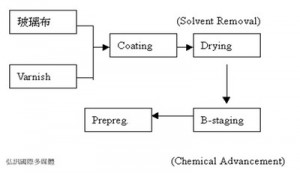As you know, sometimes we will face to copy pcb as our customers just have the pcb circuit board samples in hand, no gerberfile. Please see below details of the PCB copy board methods and steps.
The first step, get a piece of PCB, keep records on paper of all molds, parameters, and location of the components, especially direction of diode, three machine and IC gap. Best to use digital camera to take photoes of the locations.
The second step, remove all the components, and remove the tin in PAD hole. Then use alcohol to clean printed circuit board, and then turn into the scanner,start POHTOSHOP, with a color screen to scan the silk screen side, save the file and print out.
The third step, use the water tissue paper to top layer and bottom layer minor sanding, grinding to a shiny copper film, into the scanner, start PHOTOSHOP, two color ways were swept. Note, PCB placed in the scanner must be horizontal level within the tree, otherwise the scanned image will not be able to use, and save the file.
The fourth step is to adjust the contrast of the canvas, with strong conparison between the copper film and no copper film part, then turn second picture to black and white color, check the lines are clear, if not clear, repeat this step. If clear, save the picture into black and white BMP format: TOP.BMP and BOT.BMP, if found in graphics problems can be repaired and modified with PHOTOSHOP.
The fifth step, turn these two files converted to PROTEL format, in PROTEL with two layers, if the PAD and VIA of two layers are on the same plase is means that the first few steps do well, if biased, then repeat the third step.
Sixth, Turn the TOP layer of BMP into TOP.PCB, attention should be transformed to the silk layer, that layer is yellow, and scan the top layer, and place the components according to the second step of the drawings.
Seventh step, turn the BOT layer of BMP into BOT.PCB, attention should be transformed into SILK layer, that layer is yellow, and scan the top layer. Deleted silk layer when finished.
Eighth step, Let TOP.PCB and BOT.PCB together in PROTEL, merged into a graph, it’s OK.
The ninth step, use a laser printer to print TOP LAYER, BOTTOM LAYER to a transparent film on the (1:1 ratio), put the film onto the PCB, compare to them, if right, you’re done .
Other: If it’s a multi-layer pcb, we should repeat the third to the ninth step, of course, named of the graphic is different, based on the number of layers. It’s much simpler to copy multi-layer double-sided pcb than multi-layer pcb.
Ok, these are the ninth steps of the double-sided pcb copy menthods, for more information, please contact us.
